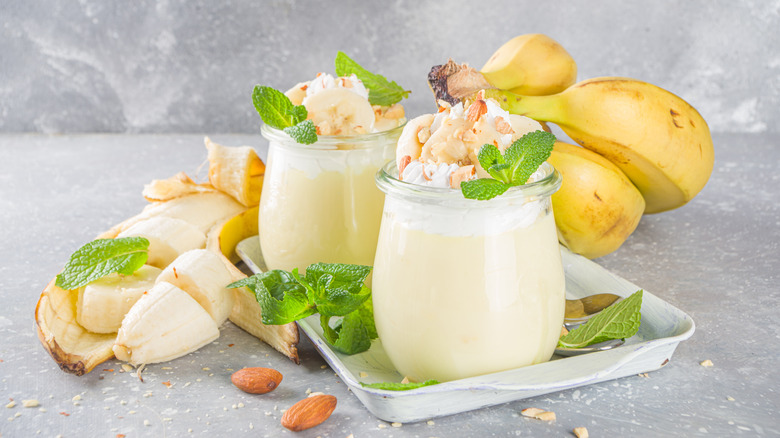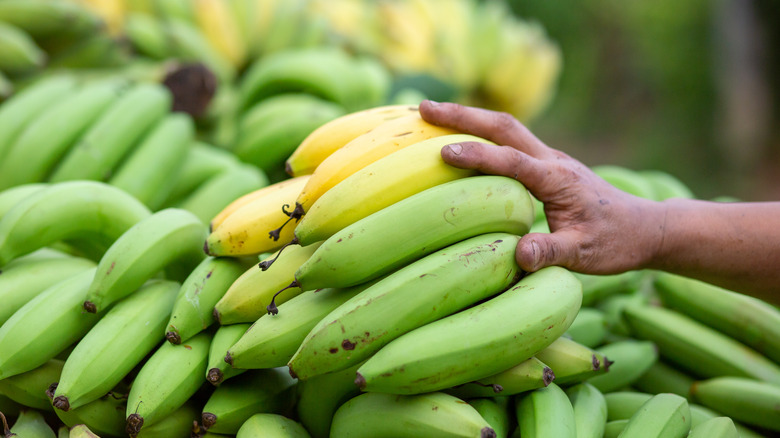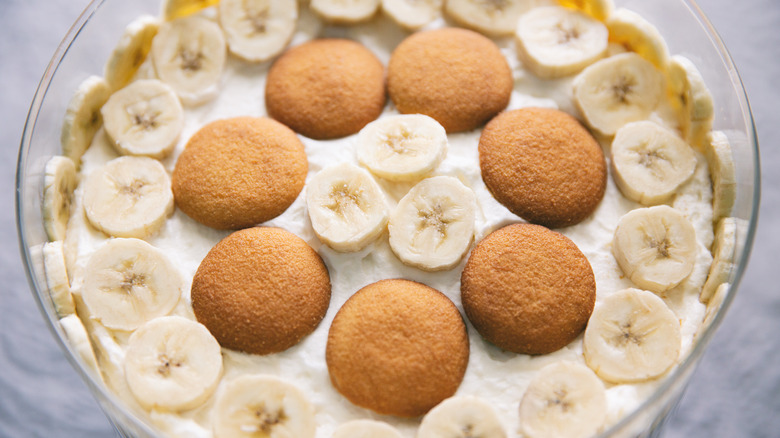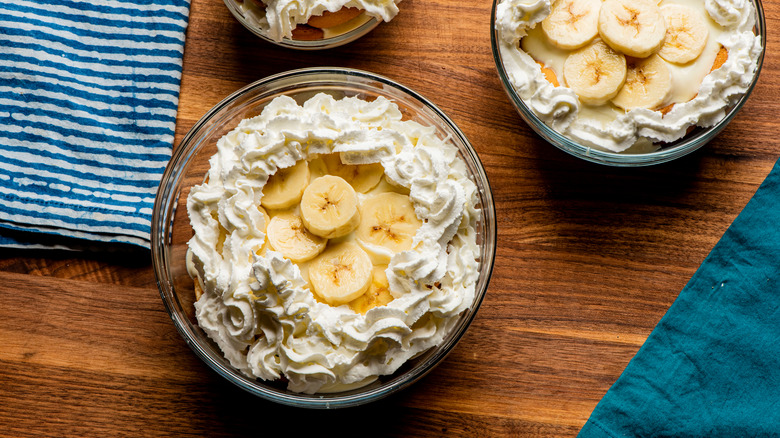The History Of Banana Pudding In The US
The banana is a popular fruit that we enjoy worldwide with its distinct sweet flavor that pairs perfectly with other fruits and desserts. It seems like it was inevitable that it would become a global phenomenon, but that wasn't always the case.
The Australian Banana Growing Council states that the banana is believed to have existed for over 10,000 years and originated somewhere in Malaya Peninsula, Indonesia, the Philippines, or New Guinea. From there, they were transported to India, Africa, Polynesia, and even further. According to the United Nations, the individual responsible for the banana's spread to Europe was Alexander the Great. Yes, that Alexander the Great. He conquered some of northern India before returning to Europe and bringing the fruit with him. The banana has gone through some dramatic changes since its origin. Humans have domesticated the once seed-filled banana into the parthenocarpy seedless fruit we enjoy today in things like banana splits, banana bread, and the classic banana pudding (via Pro Musa).
United Fruit Company Monopoly
Though the banana has been enjoyed for centuries, when the 20th century rolled around, it wasn't necessarily the most popular or widely-eaten fruit in the United States. However, one company set out to change that. Washington State University explains how during the mid-twentieth century, the United Fruit Company launched an advertising campaign centered around propagandizing American "exceptionalism" and marketed off the political tension between the U.S. and Central America. However, the company's only goal in mind was to sell bananas. The United Fruit Company took control of farmland in Central and South America and built plantations in Honduras, Guatemala, and Columbia, and by 1900 the company controlled 80% of the market often through nefarious means (via Whole Sale Nuts and Dried Fruit).
Thus began what Food & Wine describes as decades of aggressive ad campaigns to incorporate bananas into the American household and its recipes, one of those banana-based recipes became the widely popular banana pudding fashioned after the English trifle using a vanilla pudding layered with cut bananas. It was an easy-to-make dessert that captured the hearts of Americans and is a popular pudding to see at dinner parties or to snack on at the end of the day.
A Southern Obsession
What makes a dish a Southern delicacy? Is it the use of local crops? What if it is widely eaten by rich and poor alike? While certainly enjoyed in the South, banana pudding did not source its star ingredient from any farms or plantations within the country. Bananas were certainly recognized before the Civil War, but they were not easily or affordably accessible anywhere in the United States until the invention of steamships. It was then that the South only became so well-known for using them because of that area's proximity to the Caribbean and Latin American countries that grew them (via Post & Courier).
But while the late 19th century brought an abundance of bananas, Southern Living claims that the banana pudding we recognize today with vanilla pudding, banana slices, and Nabisco Vanilla Wafers was not born until 1921 when Laura Kerley published her now-classic recipe. The addition of vanilla wafers is one of the keys to banana pudding's popularity. According to Serious Eats, the Nabisco company picked up Laura Kerley's recipe and printed it on the side of their Wafer boxes. The massive marketing being done by the United Fruit Company, the support of the Nabisco company, and the vicinity to the banana's source made the Southern United States the heart of banana pudding obsession.
What exactly is a Banana Cream pudding?
Pudding is an American obsession that was adopted from English cuisine. But British Food History tells us that the English pudding didn't have sweet beginnings. Pudding was originally made of animal products like blood until people began making things like bread pudding and sticky toffee pudding that we began associating "pudding" with anything containing sugar. Today, after many variations and influences from various cultures, cuisines, and the availability of dairy ingredients, many Americans associate pudding with a mixture of cream, eggs, sugar, vanilla, and butter, although now we can just buy pre-made mixes from the supermarket. Of course, vanilla pudding is the base of any classic banana cream pudding, so don't fudge it!
A banana cream pudding is all about layers. Not only does it make your dessert look beautiful when presented in mason jars or presented in a glass deploy, but it also helps you get a little bit of every ingredient with each bite. Obviously, there is no hard-fast rule for how to layer your pudding. Recipe Boy recommends starting with a base of wafers then topping it with vanilla pudding, and finally some cleanly sliced bananas and repeating the process until your serving dish is full!



